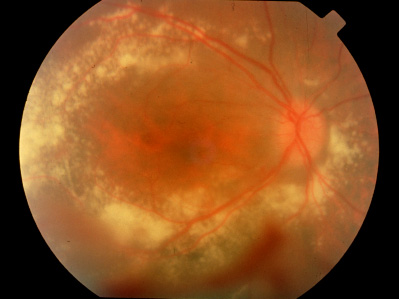Researchers at Oregon Health amp; Science University developed a way to replace most of the genes in the eggs of one rhesus macaque monkey with genes from another monkey. They then fertilized the eggs with sperm, transferred the resulting embryos into animals' wombs and produced four apparently healthy offspring.
According to Bloomberg News, "defective mitochondria are passed only from mother to child, not from the father." Data indicate that nearly one in 4,000 births produce babies with defective mitochondria. At present, there is a technique that allows doctors to assess the egg cells of women with mitochondrial diseases and pick the healthiest ones to use with in vitro fertilization procedures. Still, some women do not have any "adequate egg cells," a fact that inspired the Oregon team to devise a way to "replace defective DNA in the mitochondria
 9:51 AM
9:51 AM
 Keshav Bhat
Keshav Bhat

![Reblog this post [with Zemanta]](http://img.zemanta.com/reblog_e.png?x-id=a37629d8-8d46-4fec-ab1d-6e308521a813)

![Reblog this post [with Zemanta]](http://img.zemanta.com/reblog_e.png?x-id=556545ee-e4a7-4826-a7a7-1adadd940455)
![Reblog this post [with Zemanta]](http://img.zemanta.com/reblog_e.png?x-id=21f7c4a4-f0f4-4b18-9b81-7b832880418b)
![Reblog this post [with Zemanta]](http://img.zemanta.com/reblog_e.png?x-id=8da28adc-5f79-4feb-a3ea-489f045c6030)
![Reblog this post [with Zemanta]](http://img.zemanta.com/reblog_e.png?x-id=486db5d4-34ae-4747-8f8c-6b4c561c79f2)

![Reblog this post [with Zemanta]](http://img.zemanta.com/reblog_e.png?x-id=5c61161e-fd5a-41a7-ba5c-9ff4faaf0e38)

![Reblog this post [with Zemanta]](http://img.zemanta.com/reblog_e.png?x-id=47160185-b524-4e19-80d4-ce3a67bb9117)
![Reblog this post [with Zemanta]](http://img.zemanta.com/reblog_e.png?x-id=1bb6c397-5664-4421-a04c-ded755eee04b)

![Reblog this post [with Zemanta]](http://img.zemanta.com/reblog_e.png?x-id=808470cb-c2f5-4f04-bb4c-c27796ab4142)
![Reblog this post [with Zemanta]](http://img.zemanta.com/reblog_e.png?x-id=3c4e48a8-df9d-476d-9f9e-f25938026dd7)

![Reblog this post [with Zemanta]](http://img.zemanta.com/reblog_e.png?x-id=443f9a7a-5894-42de-ab2b-e14c6118dbe6)


